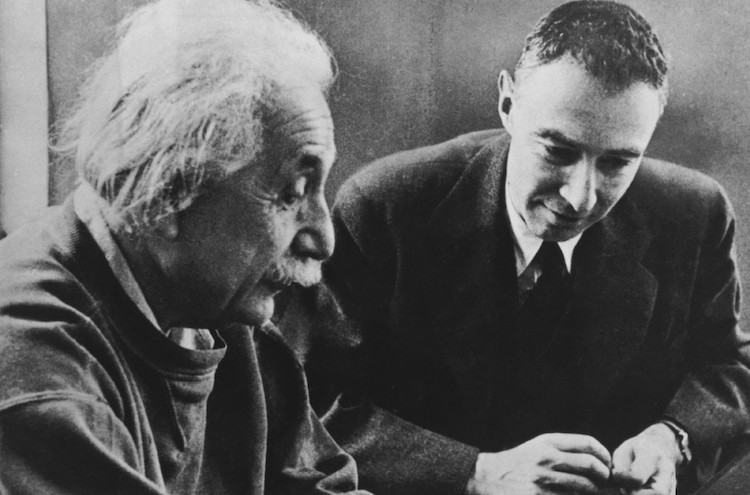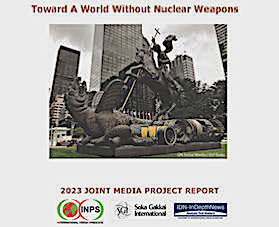By Jonathan Power*
LUND, Sweden. 25 July 2023 (IDN) — This is what is missing from Christopher Nolan’s powerful film, “Oppenheimer”- the story of the making of the atomic bomb:
Yes, one can blame the wartime leadership of Japan for persisting with the war when the evidence was overpowering that Japan along with Germany had lost World War II.
But also, one can blame the US for using the atomic bomb on Hiroshima and Nagasaki when it knew the allies had Japan on its knees. No knockout blow was needed. The US’s wartime ally, the Soviet Union, was speedily invading Japan from the north.
The events of 1945 were a mixture of Japanese pig-headed militarism and American realpolitik.
The atom bombing of the two cities is always explained by the Americans as a necessary step that was only taken because there remained no other way of forcing capitulation and saving the lives of hundreds of thousands of American troops. The film does not challenge this interpretation. But it is simply not true.
The evidence now available from opened Japanese and Soviet archives suggests that the nuclear bombing was not decisive in persuading Japan to surrender. The Emperor and the war leadership were told about the atomic bombing but it did not affect their will to continue the war. The Soviet invasion did.
Without the Soviet entry into the war the Japanese would have continued to fight until quite a few more atomic bombs had been dropped, until there had been a successful US invasion of the home islands and continued aerial bombardment, combined with a naval blockade. President Harry Truman had a workable alternative to using the atom bomb—to cooperate with Stalin, as Roosevelt and Churchill had done on the Western front.
When the Red Army invaded Manchuria, the Japanese political leadership were taken by total surprise. The invasion undermined their confidence as well as punching a fatal hole in its strategic plan. Without Japan’s surrender, Tokyo knew that the Soviets would occupy Manchuria, southern Sakhalin, the Kuril Islands and a good half of Korea and then move further southward into the mainland.
Moreover, it would have compelled Truman to concede Soviet participation in Japan’s post war occupation. This, not the nuclear bombing, was the key factor in deciding to surrender.
The US conventional bombing attacks on Japanese cities in the spring and summer of 1945 were almost as devastating as Hiroshima. They often caused more damage and even more casualties. Altogether 66 Japanese cities were attacked that summer, and a typical raid of 500 bombers could deliver 5 kilotons of bombs. The Hiroshima bomb was the equivalent of 16 kilotons, only three times bigger than the average conventional raid.
Yet neither the conventional nor the nuclear bombing turned the heads of Japan’s leaders. Its Supreme Council did not meet until two days after the Hiroshima attack of August 6th. Yet when the Soviets intervened on August 9th word reached Tokyo by 4.30 am and the Supreme Council met by 10.30am. Following Hiroshima, Emperor Hirohito took no action. He merely asked for “more details”. When he heard of the Soviet invasion, he immediately summoned Lord Privy Seal Koichi Kido and told him, “In the light of the Soviet entry…. It is all the more urgent to find a means to end the war.”
After the war Kido confessed, “If military leaders could convince themselves they were defeated by the power of science but not by lack of spiritual power or strategic errors, they could save face.” The Americans were only too happy to oblige in this 1945 political spin. If the bomb did it, then the US had been the prime instrument in Japan’s defeat. If the bomb did it, US prowess would be enhanced throughout the world.
Before the wartime generation in Japan shuffles away, they should demand that the truth about Hiroshima and Nagasaki should be explained. The film “Oppenheimer” now being viewed almost the world over is a wake-up call. A whole new batch of at least two generations in Japan is being given the bombing’s background. Now they should ask their government to give them the full picture. It will give a measure of peace to a nation’s still troubled mind.
For the US, it’s time to open the archives and level with the people. If voters knew how they were misled by President Truman who made it likely that one day that the bomb might be used again- by the US or some other country- they might give a presidential candidate committed to fast nuclear disarmament a better chance.
Copyright: Jonathan Power.
* Jonathan Power was for 17 years a foreign affairs columnist and commentator for the International Herald Tribune, now the New York Times. He has also written dozens of columns for the New York Times, the Washington Post, the Boston Globe and the Los Angeles Times. He is the European who has appeared most on the opinion pages of these papers. [IDN-InDepthNews]
Photo: Albert Einstein and Robert Oppenheimer in a posed photograph at the Institute for Advanced Study. Wikipedia.













